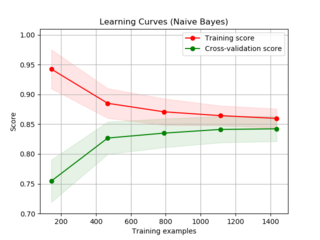Proof
Due to Hogg and Craig. [9] Let  , denote a random sample from a distribution having the pdf f(x, θ) for ι < θ < δ. Let Y1 = u1(X1, X2, ..., Xn) be a statistic whose pdf is g1(y1; θ). What we want to prove is that Y1 = u1(X1, X2, ..., Xn) is a sufficient statistic for θ if and only if, for some function H,
, denote a random sample from a distribution having the pdf f(x, θ) for ι < θ < δ. Let Y1 = u1(X1, X2, ..., Xn) be a statistic whose pdf is g1(y1; θ). What we want to prove is that Y1 = u1(X1, X2, ..., Xn) is a sufficient statistic for θ if and only if, for some function H,

First, suppose that

We shall make the transformation yi = ui(x1, x2, ..., xn), for i = 1, ..., n, having inverse functions xi = wi(y1, y2, ..., yn), for i = 1, ..., n, and Jacobian  . Thus,
. Thus,

The left-hand member is the joint pdf g(y1, y2, ..., yn; θ) of Y1 = u1(X1, ..., Xn), ..., Yn = un(X1, ..., Xn). In the right-hand member,  is the pdf of
is the pdf of  , so that
, so that  is the quotient of
is the quotient of  and
and  ; that is, it is the conditional pdf
; that is, it is the conditional pdf  of
of  given
given  .
.
But  , and thus
, and thus  , was given not to depend upon
, was given not to depend upon  . Since
. Since  was not introduced in the transformation and accordingly not in the Jacobian
was not introduced in the transformation and accordingly not in the Jacobian  , it follows that
, it follows that  does not depend upon
does not depend upon  and that
and that  is a sufficient statistics for
is a sufficient statistics for  .
.
The converse is proven by taking:

where  does not depend upon
does not depend upon  because
because  depend only upon
depend only upon  , which are independent on
, which are independent on  when conditioned by
when conditioned by  , a sufficient statistics by hypothesis. Now divide both members by the absolute value of the non-vanishing Jacobian
, a sufficient statistics by hypothesis. Now divide both members by the absolute value of the non-vanishing Jacobian  , and replace
, and replace  by the functions
by the functions  in
in  . This yields
. This yields

where  is the Jacobian with
is the Jacobian with  replaced by their value in terms
replaced by their value in terms  . The left-hand member is necessarily the joint pdf
. The left-hand member is necessarily the joint pdf  of
of  . Since
. Since  , and thus
, and thus  , does not depend upon
, does not depend upon  , then
, then

is a function that does not depend upon  .
.
Another proof
A simpler more illustrative proof is as follows, although it applies only in the discrete case.
We use the shorthand notation to denote the joint probability density of  by
by  . Since
. Since  is a function of
is a function of  , we have
, we have  , as long as
, as long as  and zero otherwise. Therefore:
and zero otherwise. Therefore:

with the last equality being true by the definition of sufficient statistics. Thus  with
with  and
and  .
.
Conversely, if  , we have
, we have

With the first equality by the definition of pdf for multiple variables, the second by the remark above, the third by hypothesis, and the fourth because the summation is not over  .
.
Let  denote the conditional probability density of
denote the conditional probability density of  given
given  . Then we can derive an explicit expression for this:
. Then we can derive an explicit expression for this:

With the first equality by definition of conditional probability density, the second by the remark above, the third by the equality proven above, and the fourth by simplification. This expression does not depend on  and thus
and thus  is a sufficient statistic. [10]
is a sufficient statistic. [10]

















































































































